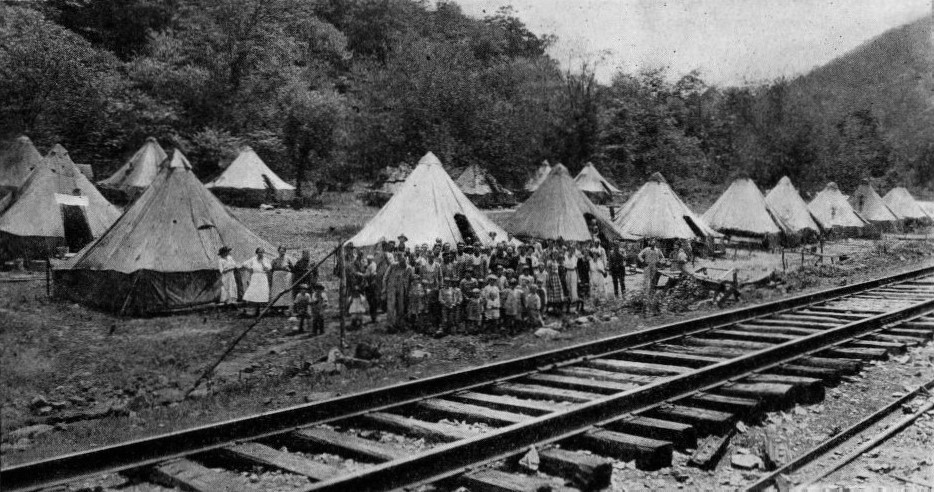On February 7, 1913, a brutal act of violence occurred that sparked the beginning of the West Virginia Mine Wars, a conflict between the coal barons and the miners in that state that culminated in the Battle of Blair Mountain nearly a decade later. As miners struggled for better wages and working conditions, they faced fierce opposition from coal operators and their hired enforcers.
The United Mine Workers of America (UMWA) had been organizing in West Virginia, but mine owners resisted by employing the notorious Baldwin-Felts Detective Agency. These agents served as mine guards, harassed union organizers, and forcibly evicted striking miners and their families from their company-owned homes. Displaced miners set up tent colonies near the mines, determined to continue their fight.
One such colony stood at Holly Grove on Paint Creek. On February 7, 1913, coal operator Quin Morton, Kanawha County Sheriff Bonner Hill, and Baldwin-Felts mine guards boarded a company train known as the “Bull Moose Special.” As they passed through the Holly Grove encampment, the guards opened fire on the miners, killing Cesco Estep and wounding several others.
Morton, unfazed by the bloodshed, reportedly wanted to turn the train around and fire again. Only the intervention of others aboard prevented further carnage.
The attack enraged the miners. In retaliation, they launched an assault on a mine guard encampment at Mucklow (now Gallagher). The ensuing battle left 16 dead, most of them mine guards.
The violence at Holly Grove and Mucklow marked a significant chapter in the Mine Wars, a struggle that would eventually lead to the Battle of Blair Mountain in 1921. These events underscored the brutal lengths to which coal companies would go to suppress unionization—and the unbreakable resolve of miners to fight for their rights.


